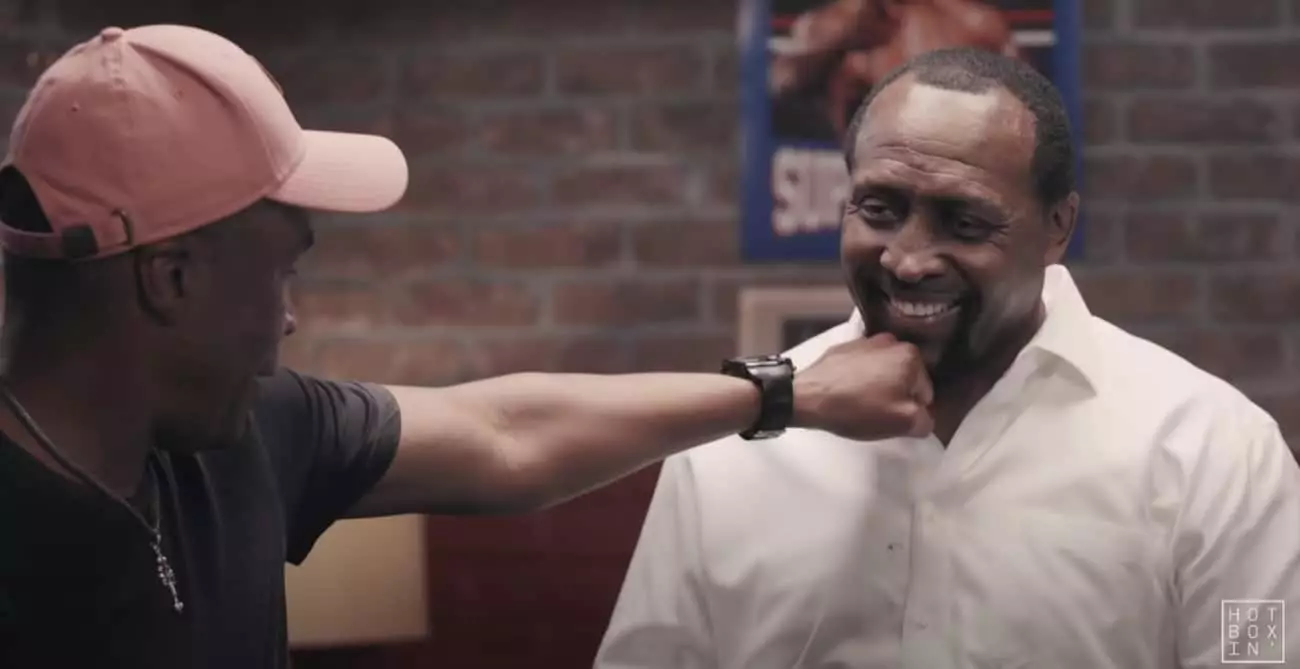BY BOXING HIT STAFF-
September 16, 1981, marked a seminal moment in the annals of boxing—a date when two titans of the sport, Sugar Ray Leonard and Thomas “Hitman” Hearns, clashed in a championship bout that would be whispered about for generations. This wasn’t just about titles; it was a defining moment where both fighters aimed to solidify their legacy and assert dominance over the welterweight division. There was an aura of greatness surrounding both men, each promising a spectacle that would elevate the sport itself. As fans flocked to Caesars Palace, the anticipation buzzed in the air, setting the stage for what many would deem the greatest fight ever at 147 pounds.
Leonard and Hearns were physically and stylistically distinct, making their impending confrontation all the more captivating. Hearns, trained by the legendary Emanuel Steward, was a powerhouse boxer known for his long reach and punishing jab. He entered the ring weighing a mere 143 pounds, a testament to his rigorous training efforts but also a potential disadvantage that would play a significant role as the fight unfolded. Meanwhile, Leonard, under the careful guidance of Angelo Dundee, was not only in peak physical condition but also armed with the experience amassed through three previous super-fights. This difference in readiness foreshadowed a battle not just of skill but of endurance, will, and tactical ingenuity.
The fight opened with Hearns asserting control, utilizing his reach and tactical prowess to dominate the early rounds. As he implemented a strategy akin to chess, both fighters showcased high-level ring IQ, where each step and punch bore significant weight. Hearns built a lead, captivating his supporters while pushing Leonard to the brink of desperation. Yet, in boxing, momentum can shift in an instant. Round six would be a turning point; Leonard landed a counter left that startled Hearns, showcasing his capacity to strike back with ferocity. Suddenly, the narrative shifted—Leonard transformed from the hunter into the hunted.
The ensuing rounds became a dance of survival and pursuit. With Leonard now showcasing aggression, Hearns relied on his agility and skills to minimize damage, turning this contest into a tale of resilience. Yet, as they traded blows, it was undeniable that Leonard was adapting, learning, and evolving inside the squared circle.
As the rounds progressed, so too did the stakes. Leonard’s barrage of strikes began compromising Hearns’ defenses. The fatigue started to show, especially as Leonard’s strategy became increasingly aggressive. This was not only a physical challenge, but a profound mental battle where the psychological pressure mounted on both sides. Leonard’s left eye swelled from the strikes he absorbed, yet he bore on, fortified by his corner’s encouragement. With whispered insistence, Dundee called Leonard to muster his fighting spirit: “You’re blowing it, son. You’re blowing it!” Such motivational fervor rejuvenated Leonard and lit a fire that would prove pivotal.
In the thirteenth round, Leonard exploded—propelled by instinct and desperation—dismantling Hearns. He capitalized on his opponent’s waning strength, knocking Hearns down twice, though the referee acknowledged only a single knockdown. The suspense in the arena was palpable, as fans witnessed one man reaching the pinnacle of his potential while the other clung on as valiantly as he could.
With the final rounds looming, Leonard unleashed a relentless offensive in round fourteen, forcing referee Davy Pearl to halt the fight and declare Leonard the victor. This decision sparked debate; despite Hearns holding an advantage on the scorecards at the time, the observable decline in his demeanor made the stoppage justifiable. Leonard emerged, not only as a champion but as a symbol of resilience, showcasing his transformation from a desperate fighter to a triumphant one.
The legacy of this fight would echo through time, serving as an exemplar of boxing’s rich history. It was not merely about who won; it was about how both men confronted challenges while displaying artistry in the ring. Future bouts between the two—including their later encounter ending in a controversial draw—only added layers to the narrative of their rivalry.
In a sport often characterized by fleeting moments of glory, the clash between Leonard and Hearns serves as a timeless reminder of what can occur when two extraordinary athletes—each with more than titles at stake—decide to leave everything in the ring.


Leave a Reply